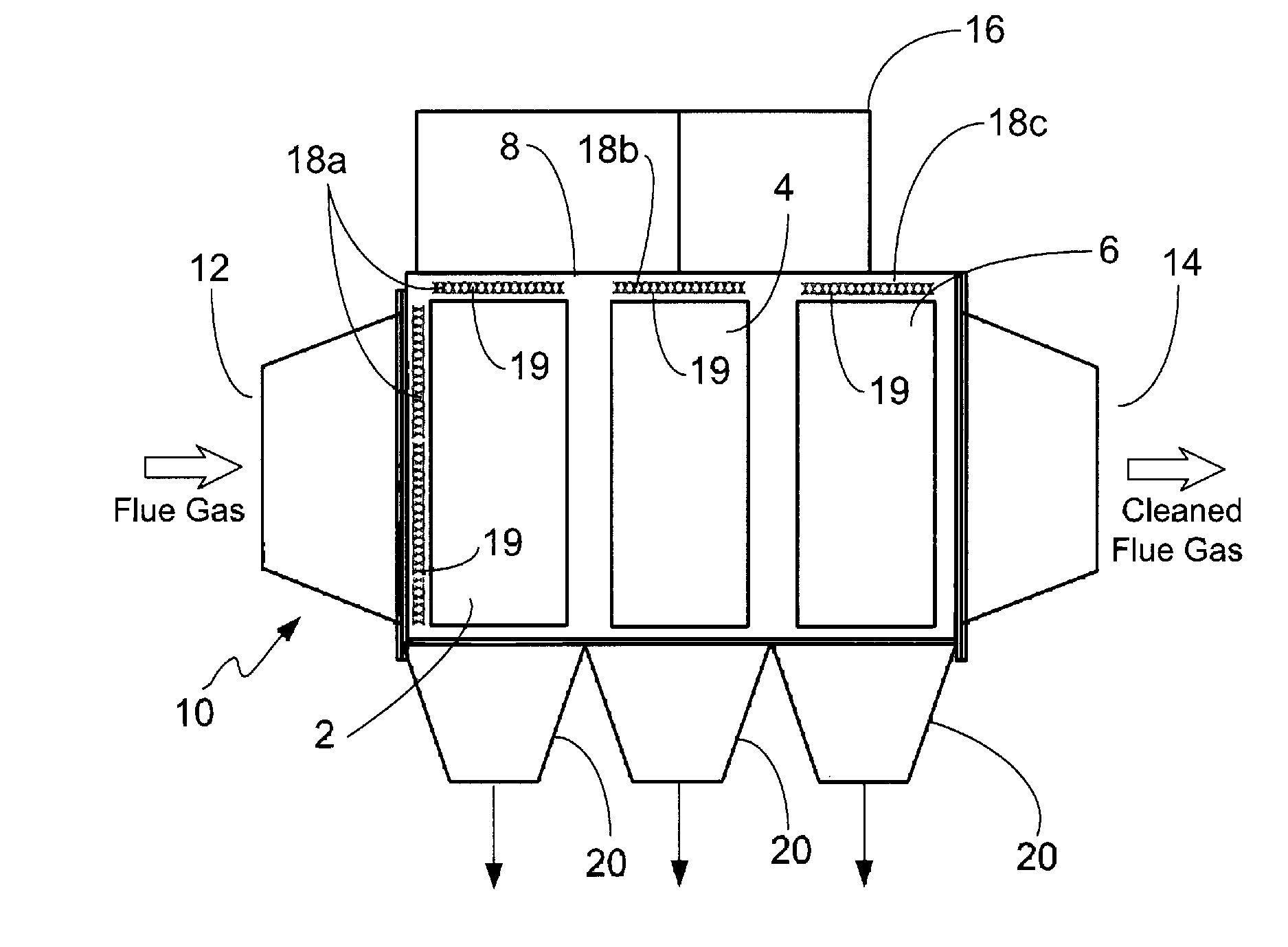Hybrid wet electrostatic precipitator
a precipitator and hybrid technology, applied in the direction of electrode cleaning, dispersed particle separation, separation process, etc., can solve the problems of difficult charge of particles, difficult to meet the requirements of gaseous emissions or gas-to-particle conversion, and particle agglomeration or clinging together, etc., to facilitate continuous wetting surface, improve wetting properties, and improve corrosion resistance
- Summary
- Abstract
- Description
- Claims
- Application Information
AI Technical Summary
Benefits of technology
Problems solved by technology
Method used
Image
Examples
Embodiment Construction
[0019]As shown in FIG. 2, a hybrid, wet electrostatic precipitator 10 has a housing 8, a first electric precipitation zone 2 in the path of the flue gas, a second electric precipitation zone 4 and a third electric precipitation zone 6 which are downstream from the first electric precipitation zone 2. Particulate-laden gas enters the housing 8 at entrance 12 and leaves the housing at exit 14. The electric precipitation zones 2, 4, 6 are in series with each other. As would be appreciated by the skilled artisan for the purposes of the present application, the terms collection zone and electric precipitation zone are synonymous and thus used interchangeably here through.
[0020]Although FIG. 1 shows horizontal gas flow, the HWESP of the instant invention can be configured such that flow can be directed any direction such as and including vertically or diagonally. The number of electric precipitation zones may also be increased or decreased depending upon the specific design requirements.
[...
PUM
 Login to View More
Login to View More Abstract
Description
Claims
Application Information
 Login to View More
Login to View More - R&D
- Intellectual Property
- Life Sciences
- Materials
- Tech Scout
- Unparalleled Data Quality
- Higher Quality Content
- 60% Fewer Hallucinations
Browse by: Latest US Patents, China's latest patents, Technical Efficacy Thesaurus, Application Domain, Technology Topic, Popular Technical Reports.
© 2025 PatSnap. All rights reserved.Legal|Privacy policy|Modern Slavery Act Transparency Statement|Sitemap|About US| Contact US: help@patsnap.com


